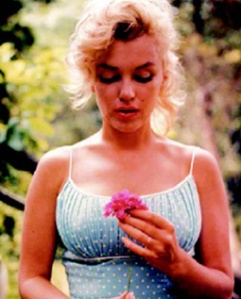
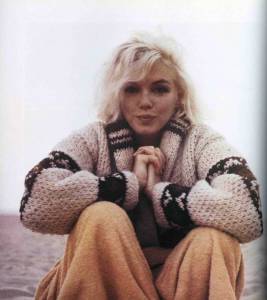
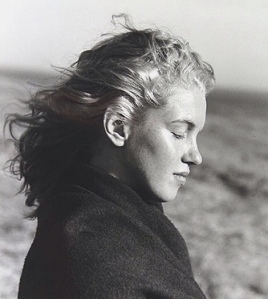
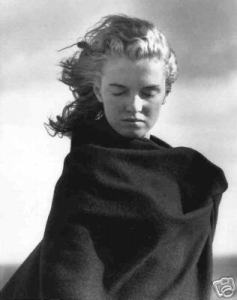
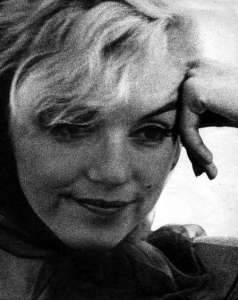
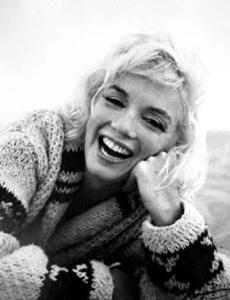 Celebrities are involved in our everyday lives whether we mean them to be or not, we see them on a daily basis through tabloids, commercials, and entertainment. The most famous celebrity is Marilyn Monroe. Marilyn Monroe, her real name Norma Jean Mortenson, was a popular actress, but she was also known for her striking looks, style, as a sex symbol, and her mind, she was very smart and enjoyed reading. However, these were not the only things Marilyn Monroe was famous for. She was also known for less agreeable things, like having an affair with President John F. Kennedy, and her still unsolved murder or suicide death, being found naked with drugs strewn about the room. These actions may not have been the conscious decision of Marilyn Monroe, many celebrities suffer stress from being in the limelight every moment of their lives, but it is also possible that Monroe may have suffered from psychological illness.
Celebrities are involved in our everyday lives whether we mean them to be or not, we see them on a daily basis through tabloids, commercials, and entertainment. The most famous celebrity is Marilyn Monroe. Marilyn Monroe, her real name Norma Jean Mortenson, was a popular actress, but she was also known for her striking looks, style, as a sex symbol, and her mind, she was very smart and enjoyed reading. However, these were not the only things Marilyn Monroe was famous for. She was also known for less agreeable things, like having an affair with President John F. Kennedy, and her still unsolved murder or suicide death, being found naked with drugs strewn about the room. These actions may not have been the conscious decision of Marilyn Monroe, many celebrities suffer stress from being in the limelight every moment of their lives, but it is also possible that Monroe may have suffered from psychological illness.
There are many factors which may have had an effect on Marilyn Monroe’s psychological state. The first factor is her family life; mental illness was hereditary on her mother’s side. After her father abandoned the family Marilyn’s mother was admitted into several mental institutions because of depression and schizophrenic tendencies. This left Marilyn to spend a great deal of her childhood in orphanages and eleven different foster homes. As well as having the hardship of living in foster homes, she was also mistreated in several of them, including experiencing sexual abuse (“The hidden life,” 2013).
When Monroe entered into the entertainment industry, she was encouraged to change her personal appearance into what we recognize her as today, including her signature platinum blonde hair. Besides her appearance, Marilyn Monroe was also forced to put on a façade of who she was, hiding her intelligence and interests, and showing her “dumb blonde” persona to the world through Hollywood. Essentially, she was separated into who she truly was, Norma Jean, and who she was made into, Marilyn Monroe. Monroe did not have contact with her family; she was treated for her psychological symptoms, and constantly was observed; although, besides these people and her publicists and Hollywood connections, she did not have contact with the outside world (“The Hidden Life”, 2013). After several years of acting, Marilyn Monroe’s mental illnesses began to catch up with her. During the filming of Seven Year Itch she would constantly forget her lines, and cost the production money because of how many retakes that had to be done. After this she began to participate in substance abuse, taking sleeping pills on a regular basis, drinking to intoxication, and using drugs on set. She was later let fired while working on the film Something’s Got to Give, and ended up in a mental institution afterwards (“Marilyn monroe and,” ).
When many of Marilyn’s writings and poetry were found, they created documentation of her many sexual affairs with men other than her husband, Arthur Miller, and fully made concrete evidence of her depression and erratic behavior. Her last photoshoot with photographer Bert Stern for Vogue took place after her divorce, a miscarriage, and after she was released from a mental hospital. Many say this photoshoot is symbolic because while she looks like a beautiful star, she does not look happy, or even alive (“The hidden life,” 2013).
The psychological disorders that Marilyn Monroe experienced are created through the Behaviorist Theory and the Biological Theory of psychology. The Biological Theory states that genetics are responsible for a person’s behaviors and the Behaviorist Theory states that observed behaviors and actions are responsible for the individual’s psychological actions. These two theories are relevant to the behavior of Marilyn Monroe because of the mental illness that ran in her family, and her own illness mirrored that of her mother; as well as this Monroe’s true personality being suppressed by the film industry and her substance abuse created a breeding ground for stress and discontent leading to depression (Cherry, n.d.). The personality traits that Monroe portrayed were based upon the facets of neuroticism, her lack of self esteem from events in her life, like sexual abuse, the absence of her father, depression, and lack of ability to express herself are also what may have led to her untimely death. These traits are present in all people, but if Monroe was able to be taken care of in a healthy way rather than numbing herself with harmful substances she may have been able to overcome her pain and prevent her death (Kowalski & Westen, 2011).
REFERENCES:
Cherry, K. (n.d.). Theories of Personality. About.com Psychology. Retrieved April 29, 2014, from
http://psychology.about.com/od/psychologystudyguides/a/personalitysg_3.htm
Kowalski, R., & Westen, D. (2011). Psychology (6th ed.). Hoboken, NJ: Wiley.
Marilyn monroe and mental illness. (n.d.). Retrieved from http://www.marilyn-monroe-
posters.com/mental-illness.html
The Hidden Life of Marilyn Monroe, the Original Hollywood Mind Control Slave (Part-I) – The Vigilant
Citizen. (2013, May 21). The Vigilant Citizen RSS. Retrieved April 28, 2014, from
http://vigilantcitizen.com/vigilantreport/the-hidden-life-of-marilyn-monroe-the-original-
hollywood-mind-control-slave-part-i/
The hidden life of marilyn monroe part 2. (2013, June 5). Retrieved from
http://vigilantcitizen.com/vigilantreport/the-hidden-life-of-marilyn-monroe-the-original-
hollywood-mind-control-slave-part-ii/
